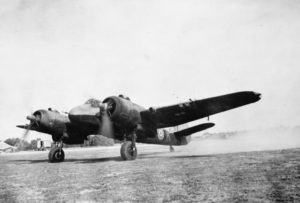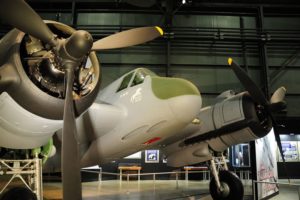From Wikipedia:
The Bristol Type 156 Beaufighter (often referred to simply as the “Beau”) is a multi-role aircraft developed during the Second World War by the Bristol Aeroplane Company in the United Kingdom. It was originally conceived as a heavy fighter variant of the Bristol Beaufort bomber. Upon its entry to service, the Beaufighter proved to be well suited to the night fighter role, for which the Royal Air Force (RAF) initially deployed the type during the height of the Battle of Britain, in part due to its large size allowing it to accommodate both heavy armaments and early airborne interception radar without major performance penalties.

From the National Museum of the US Air Force:
When the USAAF formed its first radar-equipped night fighter squadron in January 1943, the only American night fighter available was the makeshift Douglas P-70, a modified A-20 bomber using the U.S. version of the Mk IV radar. After initial training in the P-70, the first USAAF night fighter squadrons went to war in the more capable British Beaufighter.
The 414th, 415th, 416th and 417th Night Fighter Squadrons received more than 100 “reverse Lend-Lease” Beaufighters. They arrived in the Mediterranean during the summer of 1943, achieving the first victory on July 24. Through the summer, they conducted daytime convoy escort and strike missions, but thereafter flew primarily at night. Although purpose-built American P-61 Black Widow night fighters began to replace them in December 1944, USAAF Beaufighters continued to fly night cover for Allied forces in Italy and France until the closing days of the war.

The museum’s aircraft was built under license by the Fairey Aviation Co. in Stockport, England, and delivered to the Royal Australian Air Force in 1942. It is marked as the USAAF Beaufighter flown by Capt. Harold Augspurger, commander of the 415th Night Fighter Squadron, who shot down an He 111 carrying German staff officers in September 1944.
Tom’s squadron, the 417th NFS, originally flew the British Beaufighter in combat in Africa, Italy and France. Although not trained in flying the Beaufighter, at the time Tom joined his squadron in France, those were the only night fighter aircraft in the squadron. But within a few weeks, the new P-61 Black Widows were delivered and the entire squadron switched over to the newer and more capable night fighter aircraft.
